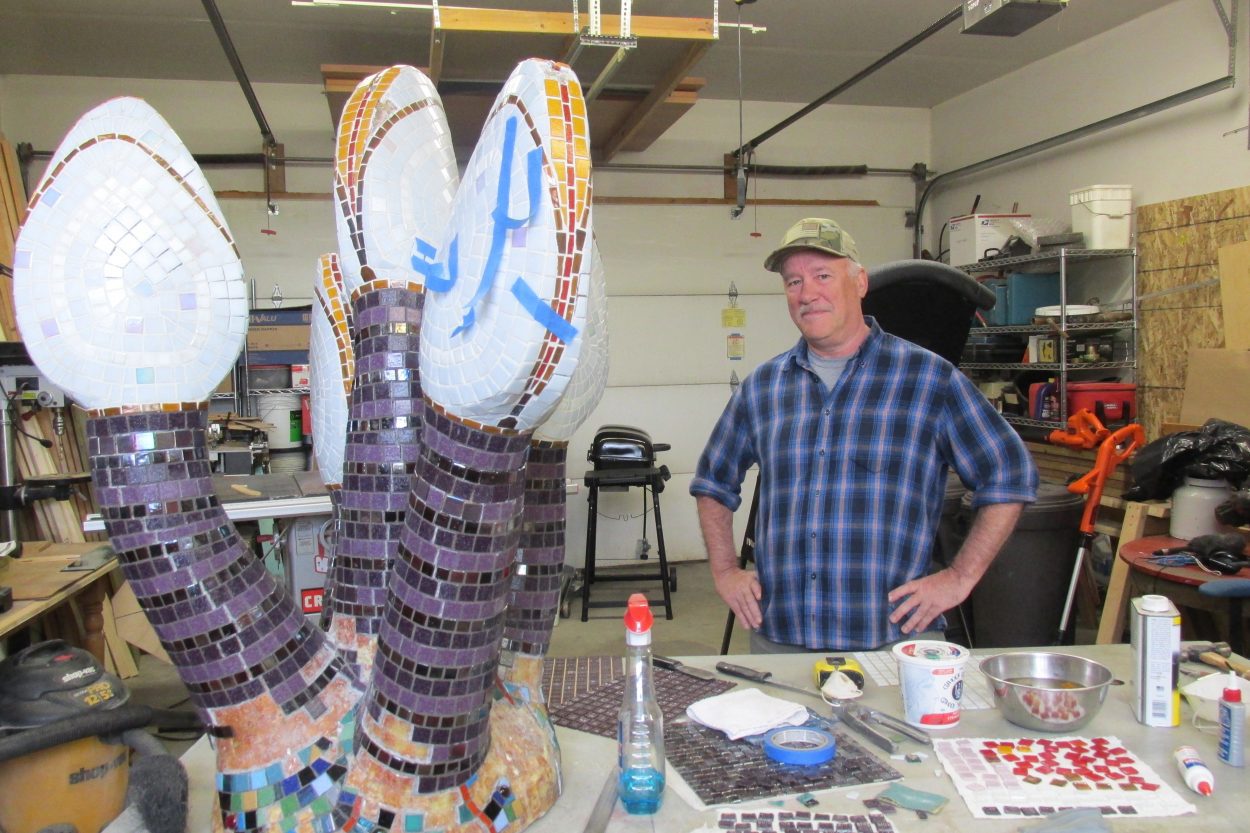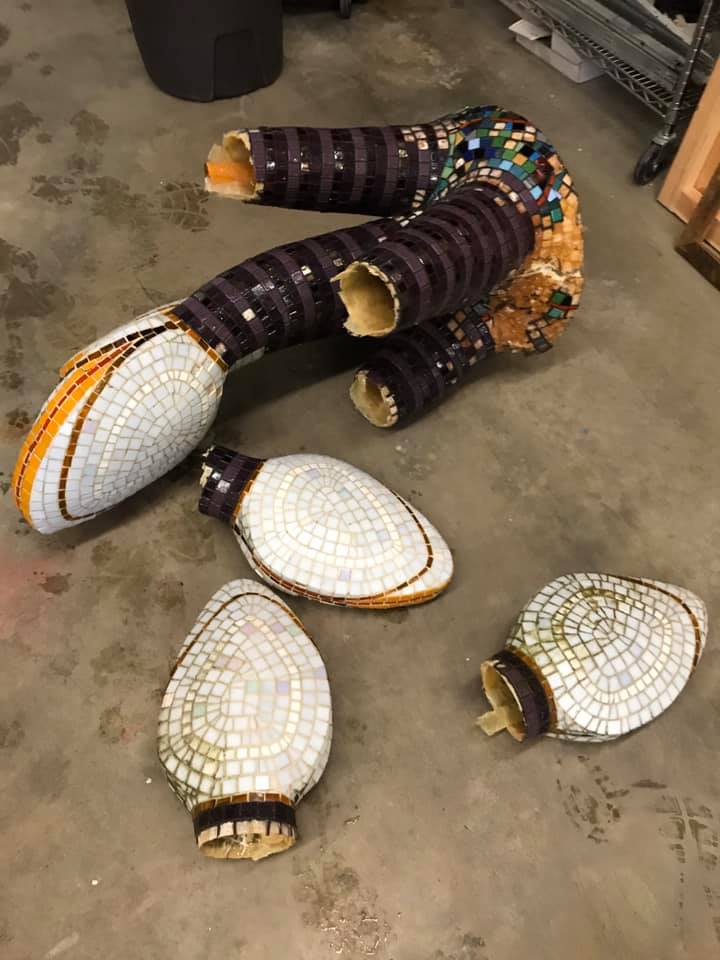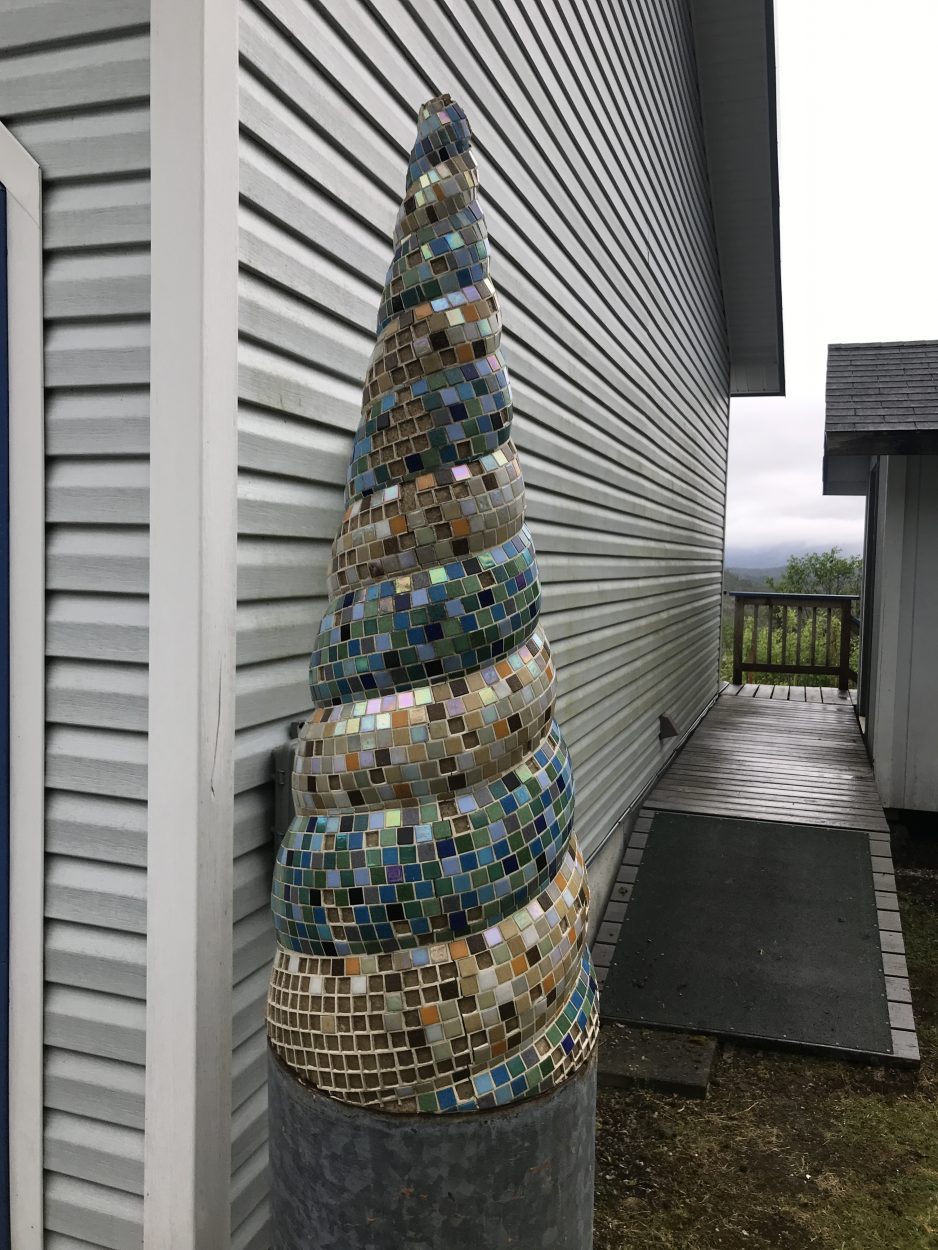
Terry Pyles at his workshop in May 2020, working to restore his goose barnacles sculpture (KRBD staff photo by Maria Dudzak).
This past February vandals severely damaged a piece of public art in Ketchikan – one of four mosaic piling caps that graced Ketchikan’s downtown docks. With encouragement and support from the community, artist Terry Pyles is working to restore the piece. Here is an update on how repairs are going and what the community has done to help.
Terry Pyles was inspired to create the piling caps after a 2005 trip to Barcelona, Spain where he admired the mosaic constructions of Antonio Gaudi.
“Houses that are all mosaic. Hotels that are all mosaic. Just over the top stuff. And it inspired me to do some mosaic, and it hit on me that piling caps might be a cool thing to do in mosaic.”
With his own money and time, and a few small donations, he created four piling caps featuring local sea life – an octopus, whelk shell, auger snail and goose barnacles. The works have been enjoyed by locals and visitors for over 13 years, and images appear in brochures touting Ketchikan as a tourist destination.
On February 9th, someone managed to reach over a railing and dislodge the goose barnacles sculpture. The piece fell onto a floating dock more than 20 feet below.

A photo posted on Facebook showing damage to the barnacles sculpture (photo courtesy of Terry Pyles).
The next morning Pyles received a call from Ketchikan’s harbormaster telling him what happened. He said when he went down to look at the damage, he was devastated.
“I felt, very much, attacked. It’s very difficult to describe but, I think the feeling I got was one of…being violated.”
Three of the five barnacle heads snapped off and tiles were scattered along the dock. Pyles heard second-hand that someone was seen downtown the night before “causing mischief.” There are no surveillance cameras in that area and no suspect was identified.
Photos of the damaged sculpture were posted to Facebook shortly after the incident, and more than 500 people commented, many encouraging Pyles to restore the piece and offering financial assistance. A local business held a fundraiser, and Pyles says even out-of-towners contributed money for materials and labor. He says he appreciates all the support, but restoring the piece is a very painful process.
“It’s actually kind of like torture to me. I don’t get much enjoyment out of fixing something that I already created and spent hundreds of hours creating, and now I’m spending hundreds of hours repairing.”
The base of the sculpture is made of hollow epoxy resin with fiberglass cloth. A special glue is used to adhere small, multi-colored tiles. Work is time consuming with each tile having to be cut and placed by hand.
“There’s no quick way of doing it because the surfaces are all curved so you can’t just lay a big sheet up there and expect it to work out.”
Pyles says it took about 500 hours to create the original piece and estimates it will take at least 200 hours to repair. He is also working to repair the auger snail cap which was accidentally damaged when a vehicle, from a nearby business, backed into it.
Public art can be found throughout Ketchikan. Kathleen Light is executive director of the Ketchikan Area Arts and Humanities Council. She says Pyles’ pieces, especially the goose barnacles, are unique and special.
“It is, it was, such an unusual piece and it’s part of our environment. He just beautifully recreated the underwater scene of our environment and let us see that above water.”
She says public art is a reflection of where you live.
“And that’s something that public art does. It shows us our environment, it shows us our community and it’s often a way to show pride in our community.”
At the request of Ketchikan’s city mayor Bob Sivertsen, Pyles prepared a proposal to restore the damaged pieces and sell all four piling caps to the city. At its June 18th meeting, the city council approved a $25,000 budget transfer for the project, with money coming from reserve funds from the head tax paid by cruise ship passengers. Once they’re the property of the city, staff recommends the pilings be relocated from the promenade to Daly Float at Berth 1 for security.
Prior to cancellations due to the global pandemic, Pyles planned to complete the work by late summer so they could be installed and enjoyed by cruise visitors. He now estimates repairs will be completed by the end of September, if not sooner.









